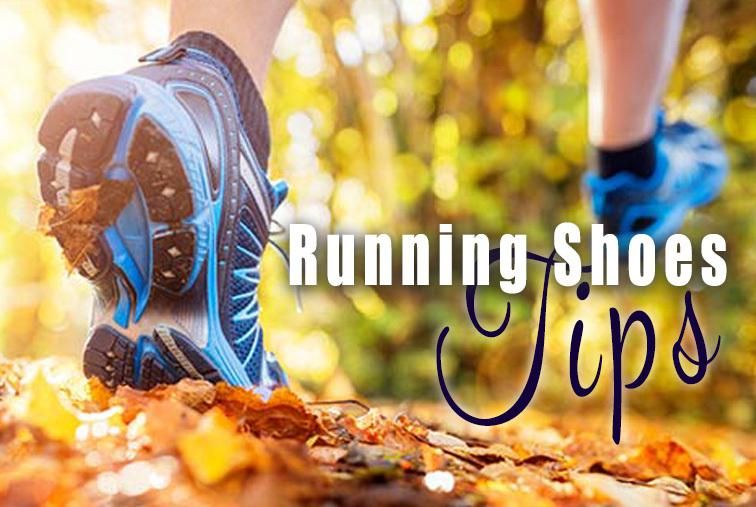If your feet hurt after you take a run, or you form blisters from what counts barely as a run, it's probably because you are using PT shoes, sneakers, or Vans as your running shoes- the same eight year old shoes you wore on your first hike. It's time you take a look into what you've been doing wrong this whole time.
The following tips to choose the best running shoes can help give your feet more lives.
- 1. Determine Your Foot Type
Determining your foot type is a precursor to choosing the right running shoes, for the comfort, support and durability that follows is in correspondence with the match your foot type makes with the shoe type. It is best determined by checking your arch height.
If you have a low-arched foot, Motion Control Shoes would work best for you, having a wide and a straight shape at the bottom, giving maximum support and control.
For normal-arched feet, you would want to search for Stability Shoes (semi-curved shape); these comply with providing a good balance between cushioning and support.
High-arched feet yearn for Neutral Cushioning Shoes which display the most curved shape of all, allowing an enhanced ground-contact feel.
- 2. Determine Your Stride
Following the foot type, it is also important to know that each type of foot strides differently, thereby demanding different sets of running shoes.
A Neutral stride is typically the one where the heel strikes the ground first, and then the forefoot and toes follow, evenly distributing the weight of the body. Hence, such runners should opt for neutral shoes with finer heel cushioning and medial support.
Runners with an Over-pronated stride have their inner heel striking the ground first, followed by the big toe. This destabilizes the motion of the body, concurring to the requirement of Motion Control Shoes.
On the other hand, Under-pronated striders require suitable cushioning and quick heel to toe traction to suffice the foot rolling outward.
- 3. Keep Your Body Weight In Mind
It is crucial to be mindful of your body weight when buying running shoes, for it is directly proportional to affecting your feet, joints, and muscles. Accordingly, if your shoes are not affirmative of proper cushioning, the risk of shock waves being transmitted to your feet and joints would enhance the probability of heel and joint pains.
- 4. Consider Your Running Surface
If you are planning on road running/ plain surface running, the shoes in specific are lightweight, conforming to good cushioning, stability, and flexibility with respect to the type of stride.
The best running shoes for trail running/ rough surface running come with good support and traction for an improved grip, stability, and a hard sole to shield your feet against sharply defined rocks and surfaces.
Meanwhile, for indoor running or for treadmill running, the preferable shoes would be light and flexible with softer soles to allow for adequate ventilation.
It should also be maintained that separate pairs of running shoes must be bought if you are planning on participating in a marathon alongside taking a usual stride in a public park.
- 5. Consider the Frequency of Your Running
The frequency of your running sessions is optimal in determining your preference of cushioning; if you run approximately three times a week, well-cushioned footwear would do justice, ensuring thorough support. This then parallels the pace and intensity of running to comprehend the suitability of the running shoes. However, if you run four to five days a week, that plausibly means you have good stamina. But it also means that you require running shoes with advanced cushioning and support. If by any chance you are a sloth, you need not take all this trouble. Basic running shoes would do you good.
- 6. Consider the Intensity of Your Running
If you are an advanced runner whose long-term goal is to beat The Flash, you predominantly need lightweight shoes to provide the maximum boost. Their dynamic structure must submit to reducing the shock waves, ensuring maximum comfort with the intense cushioning.
- 7. Decide the Level of Cushioning Underfoot
The thickness and the firmness of the material under the midsole is yet another factor to be acknowledged whilst buying running shoes that would suit you best. This is the cushioning factor which has been maintained in several aspects. Cushioning and the heel drop combined are two factors that form the construction of a typical running shoe. The thicker the construction, the older you feel (read: comfortable).
- 8. Use the Rule of Thumb When Fitting the Shoe
Fitting your shoe accurately is as crucial as all the above factors combined. Make sure your shoe fits well with no breaking-in period. Before you invest in the wrong size, you must know that your foot glides forward inside the shoe, asking you to maintain a gap of at least ½ to 1 inch (approx. the width of your thumb) between the big toe and the front end of your running shoes. Alongside, your heel should fit tightly, and should not slip out as you run. You don't want to portray you're wearing someone else's shoes. Also, the upper part of the shoe should be secure and airy so as to enable you to wiggle your toes freely when they sweat.
- 9. Ensure the Purchase Timing to be Viable
Expert runners suggest buying running shoes at the end of the day to make room for swollen feet caused by the rigorous movement of legs throughout the day. If you buy your shoes at the wrong time, they won't fit you when your feet are at their maximum size. The discomfort then followed would not amuse your toes.
- 10. Repeat the Mantra: Best Running Shoes are Available at Specialty Running Shoe Stores
If you visit random shoe stores, you'll get carried away by the dynamic designs that have little to do with the nature and the comfort of your feet. Make sure to treat yourself with a pair that fits you perfectly, and is not uncomfortable, stiff, or heavy. (Remember: good investment lasts longer)
Pertaining to the universal acceptance of different running shoes as being considered the best, the commonly established brands would be Nike, New Balance, Asics, and Saucony, variably for cushioned running shoes. But whatever the brand may be, it is important not to be drifted away with what is considered as the standard, but with what suits your comfort and at the end of the day, your budget too.
Remember, your aim is not to choose the best running shoes; it is to choose the best running shoes for you!


 StableDiffusion
StableDiffusion
 full parking
StableDiffusion
full parking
StableDiffusion


 Photo by
Photo by 
 Photo by
Photo by  Photo by
Photo by 









